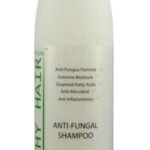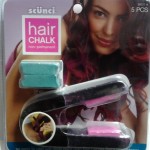 Ringworm is an infection of the skin that is caused by a fungus and it commonly affects children. It is usually treated with antifungal medication that has to be used for a few weeks. This condition is not caused by some type of worm as erroneously believed by a lot of people. Disease causing fungi are found in different varieties and they can affect the hair, nail and skin. Scalp ringworm is medically referred to as tinea capitis.
Ringworm is an infection of the skin that is caused by a fungus and it commonly affects children. It is usually treated with antifungal medication that has to be used for a few weeks. This condition is not caused by some type of worm as erroneously believed by a lot of people. Disease causing fungi are found in different varieties and they can affect the hair, nail and skin. Scalp ringworm is medically referred to as tinea capitis.
How you can become infected with scalp ringworm
Scalp ringworm is usually contracted when you make contact with an infected person either through touching or sharing clothing, brushes, towels, and so on. Fungi as well as their spores can live on brushes, furniture, combs and other materials for a long time. Some people are classified as carriers of ringworm because the fungi stay on their hair without causing an infection. Nevertheless, they can pass the fungi to other people who will then develop infection.
Ringworm can also be contracted from animals such as dogs and cats. These animals can have this infection on their skin and children who play with them can become infected. Your skin can also be infected when you touch places where infected animals are kept. Apart from direct contact, you can also get this infection through fungal spores that are carried by the air.
Scalp Ringworm Symptoms
This infection can be compared to a severe case of dandruff that appears as round patches on different spots on the skin of the head. In some cases, the infected person may suffer hair loss and bald patches will start to appear. Other cases may be accompanied by painful boils on the scalp. In very severe cases, the individual may have a fever and a large swelling known as a kerion may appear on the scalp. This has to be treated quickly in order to avoid permanent hair loss and scarring.
Scalp Ringworm Diagnosis
Proper diagnosis is necessary in order not to confuse scalp ringworm with other conditions. In certain instances, it might just look like a bad case of dandruff. A medical test is therefore necessary to obtain proper diagnosis.
Once you or your child has been diagnosed with scalp ringworm, there are a number of precautions that you have to take. Objects such as scissors, combs, hats and so on that might be contaminated have to be disinfected. This is done so as to prevent re-infection after the disease has been treated. It may not be necessary for the child to stay off school, but you should ensure that recommended treatment is properly followed.
Scalp Ringworm Treatment
Antifungal medicine
There are several antifungal medications that can be used for scalp ringworm treatment. They are generally available in the form of tablets that are taken orally. You can crush the tablets or mix them with some water to make it easier for children to swallow. Treatment can be from 4 to 8 weeks.
Antifungal shampoos and creams
An antifungal cream or shampoo may also be recommended as part of the treatment. This will enable the symptoms clear off the surface of the skin within a short period of time and reduce the likelihood of spreading to other people. You should however be aware that topical treatment cannot get rid of fungi that are embedded in the hair shaft and beneath the surface of the skin. This is why oral medication is very important.
Reference:
http://www.nsc.gov.sg/showpage.asp?id=164
http://www.emedicinehealth.com/ringworm_on_scalp/article_em.htm
Resources:
http://www.emedicinehealth.com/ringworm_on_scalp/article_em.htm



